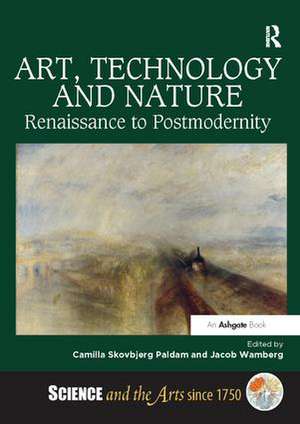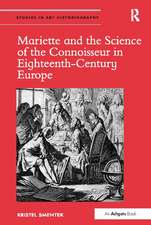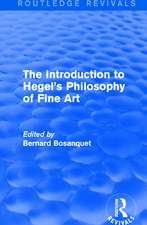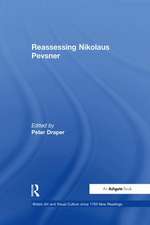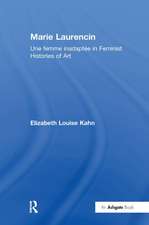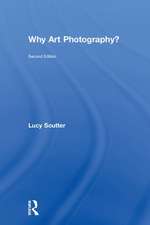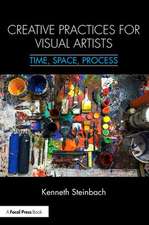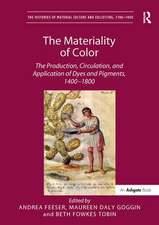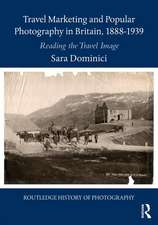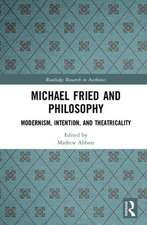Art, Technology and Nature: Renaissance to Postmodernity: Science and the Arts since 1750
Editat de CamillaSkovbjerg Paldamen Limba Engleză Paperback – 24 oct 2019
Preț: 264.59 lei
Preț vechi: 336.42 lei
-21% Nou
Puncte Express: 397
Preț estimativ în valută:
50.64€ • 54.98$ • 42.53£
50.64€ • 54.98$ • 42.53£
Carte tipărită la comandă
Livrare economică 22 aprilie-06 mai
Preluare comenzi: 021 569.72.76
Specificații
ISBN-13: 9781138310322
ISBN-10: 1138310328
Pagini: 322
Ilustrații: 18 Illustrations, color; 23 Illustrations, black and white
Dimensiuni: 172 x 244 x 22 mm
Greutate: 0.68 kg
Ediția:1
Editura: Taylor & Francis
Colecția Routledge
Seria Science and the Arts since 1750
Locul publicării:Oxford, United Kingdom
ISBN-10: 1138310328
Pagini: 322
Ilustrații: 18 Illustrations, color; 23 Illustrations, black and white
Dimensiuni: 172 x 244 x 22 mm
Greutate: 0.68 kg
Ediția:1
Editura: Taylor & Francis
Colecția Routledge
Seria Science and the Arts since 1750
Locul publicării:Oxford, United Kingdom
Cuprins
Contents: Introduction: A short history of art, technology and nature, Jacob Wamberg and Camilla Skovbjerg Paldam. Part I Assistance/Interruption: Art and Technology Interlacing with Nature: Creatio ex lingo: the characteristics of wooden Renaissance dolls, Markus Rath; Genesis of images: intersections of art and alchemy in early modern Europe, Lisbet Tarp; Living jewels, creepy crawlers and robobugs: insects in the Wunderkammer, Surrealism and contemporary art, Marion Endt-Jones; Grotesque! Strategies of figurative genesis in the 16th century and in the Surrealism of the 1920s and 1930s, Maria Fabricius Hansen and Camilla Skovbjerg Paldam. Part II Hermeneutics: Art and Technology Representing Nature: Applied science in the Renaissance art academy, Bjørn Okholm Skaarup; Artisanal epistemologies and the artless art of post-tridentine painting, Claire Farago; Printing plants: the technology of nature printing in 18th_century Spain, Alisa Luxenberg; The microscope as a musical instrument: art, hermeneutics and technoscience, Pernille Leth-Espensen; How to experience and relate to climate change: the role of digital climate art, Søren Bro Pold and Christian Ulrik Andersen. Part III Localisation/Exposure: Art and Technology Revealing Paradigms of Nature: A perfectly nebulous experiment: C.T.R. Wilson’s Cloud Chamber, Kristine Nielsen; Images of rain between representation, technology and nature, Hanna Johansson; Crossovers: the art of Rodney Graham, Roni Horn and Diana Thater between technology and nature, Hans Dickel; Haacke, systems, and ‘nature’ around 1970: an art of systems / systematic art, Caroline A. Jones; It is the city that makes the walking what it is: interview with Olafur Eliasson, Jacob Wamberg. Epilogue, James Elkins; Bibliography; Index.
Recenzii
'This book is a superb collection shaped by the latest research on the histories of nature, art, science, and technology.' Oliver Grau, Danube University, Austria
'An interesting and informative approach to ways of thinking about history, the book provides transdisciplinary conceptual analyses of historical engagements between art, nature and technology. The essays locate these engagements in paradigmatic developments of visuality and knowledge during the past five hundred years, focusing on modern examples.' Matthew Landrus, University of Oxford, UK
'An interesting and informative approach to ways of thinking about history, the book provides transdisciplinary conceptual analyses of historical engagements between art, nature and technology. The essays locate these engagements in paradigmatic developments of visuality and knowledge during the past five hundred years, focusing on modern examples.' Matthew Landrus, University of Oxford, UK
Notă biografică
Camilla Skovbjerg Paldam is Associate Professor of Art History, Department of Aesthetics and Communication, Aarhus University, Denmark. Jacob Wamberg is Professor of Art History, Department of Aesthetics and Communication, Aarhus University, Denmark.
Descriere
Are art and technology coming into a closer relationship with nature? Through a selection of innovative readings by international scholars, this book argues that since 1900 we have experienced a renewed negotiation of the convergent triangle of art, technology and nature, analysing its shifting constellations in post-medieval times.
